Alexander the Great’s legacy as a formidable military leader is undisputed, yet the details of his physical appearance have sparked curiosity and debate among historians and enthusiasts alike. This article delves into the various historical accounts, artistic representations, and the latest advancements in artificial intelligence to piece together a portrait of what Alexander might have looked like.
We unveil AI-generated images that draw upon a rich tapestry of sources, including ancient descriptions, the iconic Pompeii mosaic, and revered marble busts, offering a unique visual exploration of Alexander’s visage. Join us as we blend ancient artistry with modern technology to reveal the man behind the monumental legend, examining his stature, hair, and the intriguing question of heterochromia, among other aspects of his appearance.
What did Alexander the Great look like?
Two of the most famous ancient sources on Alexander are Plutarch and Arrian, both of whom wrote about him centuries after his death.
Plutarch, a Greek historian and biographer who lived in the 1st and 2nd centuries AD, wrote about Alexander’s appearance in his work “Lives of the Noble Greeks and Romans.”
Arrian, a Greek historian who lived in the 2nd century AD, wrote about Alexander in his “Anabasis Alexandri,” a history of Alexander’s campaigns.
Plutarch’s description of Alexander the Great
According to Plutarch, Alexander was of medium height and had a well-proportioned body. He had fair skin, a ruddy complexion, and a slightly upturned nose.
His eyes were described as dark and fiery, and he had a prominent brow. Plutarch also wrote that Alexander had a distinctive walk, with his head slightly inclined to one side.
Arrian’s description of Alexander the Great
Arrian’s description of Alexander’s appearance is similar to Plutarch’s. He also notes that Alexander was of medium height, well-built, and muscular.
Arrian describes Alexander as having a fair complexion, a prominent brow, and a sharp nose. Like Plutarch, Arrian notes that Alexander had dark, fiery eyes.
AI recreation of Alexander the Great, Based on historical descriptions By Plutarch and Arrian
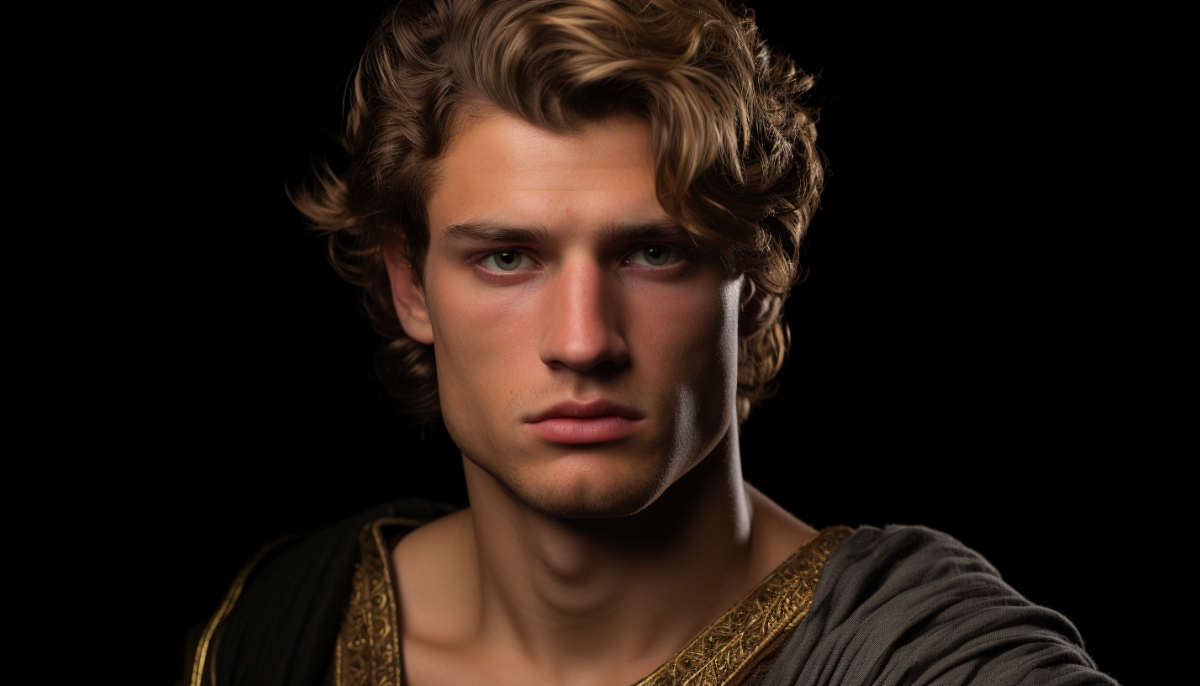
How tall was Alexander the Great?
The height of Alexander the Great is a subject of much speculation, contrasting with the more precise picture of his father, Philip II, whose skeleton was measured at 5’11” – notably taller than the average for his time.
Alexander, however, is often described by ancient sources as being somewhat shorter than average. Arrian depicts him as below-average height, while Curtius suggests he lacks an impressive physique or stature.
Artistic representations typically show Alexander as muscular, with good leg length and a somewhat stocky build. This indicates that Curtius’s remarks likely pertain to his height rather than his physical presence.
Andrew Stewart, an expert on Alexander’s art, estimates Alexander’s height to be 5’7″, short enough to be noticeable but not hinder his capabilities as a soldier.
What did Alexander the Great’s hair look like?
The description of Alexander the Great’s hair color also sparks debate among historians and scholars. Aelian, a Roman rhetoric teacher from the 2nd to 3rd century AD, describes Alexander’s hair as yellow, portraying him with naturally curly locks that added to his “neglectful handsomeness,” yet with a sternness in his countenance.
A description found in Varia Historia suggests a shade closer to “reddish blond,” a translation supported by the Classics Listserv.
Further adding to the color debate, Pseudo-Callisthenes refers to Alexander’s hair as “lion-colored,” indicating a tawny shade.
These varied descriptions highlight the difficulty in pinpointing the exact hue of Alexander’s hair but suggest a lighter color spectrum that stood out among his contemporaries and added to his distinctive appearance.
Did you know? Alexander the Great was so revered by Romans that they would often copy his style and look. The most famous example of this is Pompey the Great, a prominent Roman general and statesman. His fascination with the Macedonian conqueror's achievements led him to adopt elements of Alexander's tactics and appearance, showcasing the profound impact that the legendary figure had on subsequent historical figures.
AI images based on Marble busts of Alexander the Great
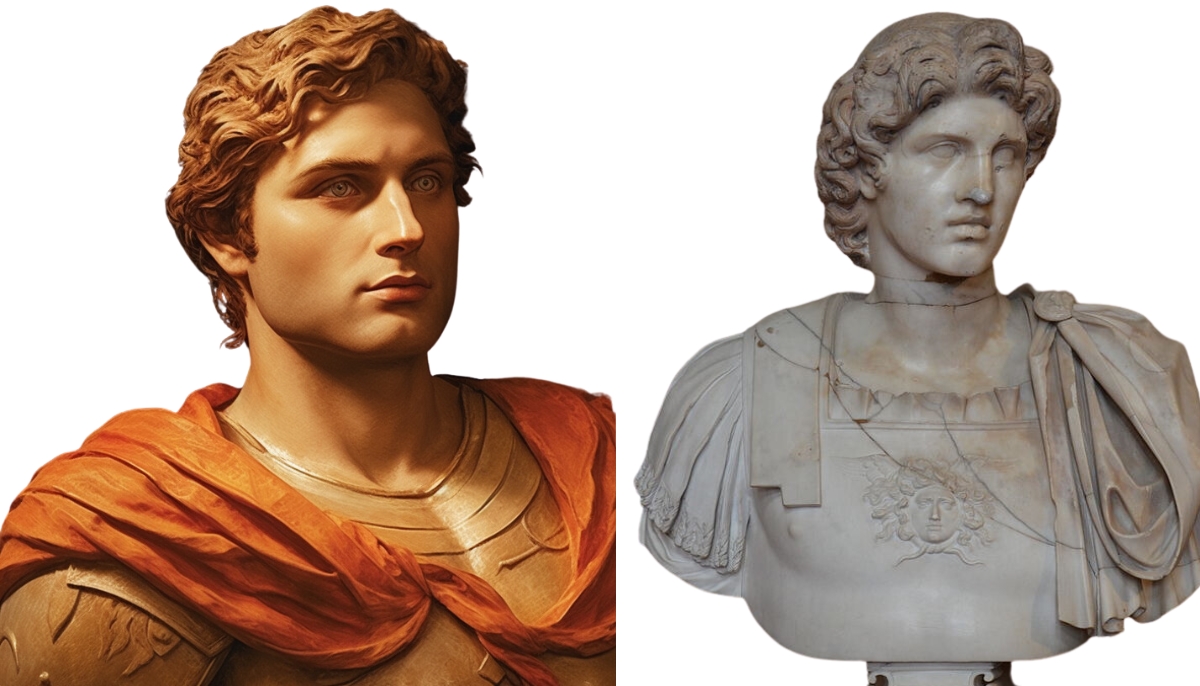
One of the standout features of this exploration into Alexander the Great’s appearance is our AI-generated recreation, inspired by a Roman bust discovered in the ancient ruins of Herculaneum.
This remarkable artifact sheds light on the Roman perspective of Alexander, encapsulating their admiration and the characteristics they revered in him.
By blending this historical artifact with modern AI technology, we offer a unique perspective on Alexander’s visage, synthesizing past admiration and contemporary innovation.
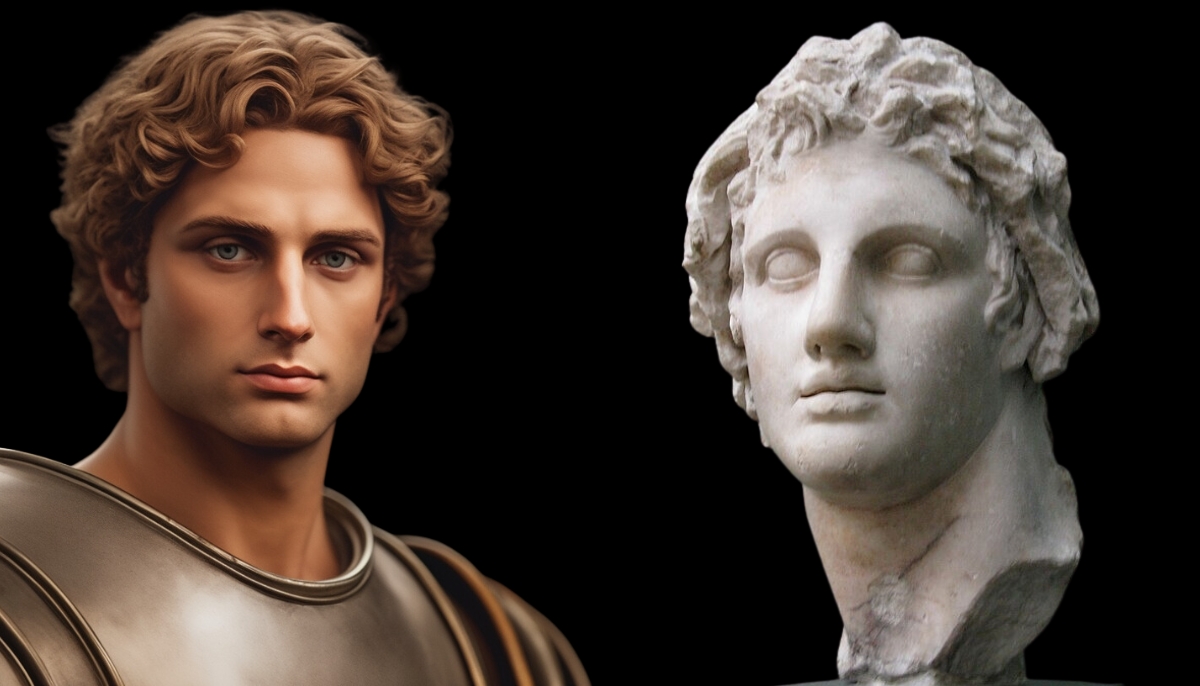
Marble busts of Alexander the Great stand as some of the most iconic and enduring images of the legendary Macedonian ruler.
Crafted from marble, a material esteemed by ancient Greek artisans for its durability, aesthetic appeal, and capacity for detailed workmanship, these busts capture the essence of Alexander’s visage for posterity.
AI-generated image of Alexander the Great based on the battle of issues mosaic

Another AI-generated image in our collection is inspired by the renowned Battle of Issus mosaic discovered in Pompeii.
This pivotal piece of art stands out as one of the most celebrated portrayals of Alexander the Great, capturing him amid one of his greatest triumphs.
By utilizing this mosaic as a foundation, our AI technology seeks to offer a more intimate glimpse into Alexander’s appearance during this defining moment of victory.
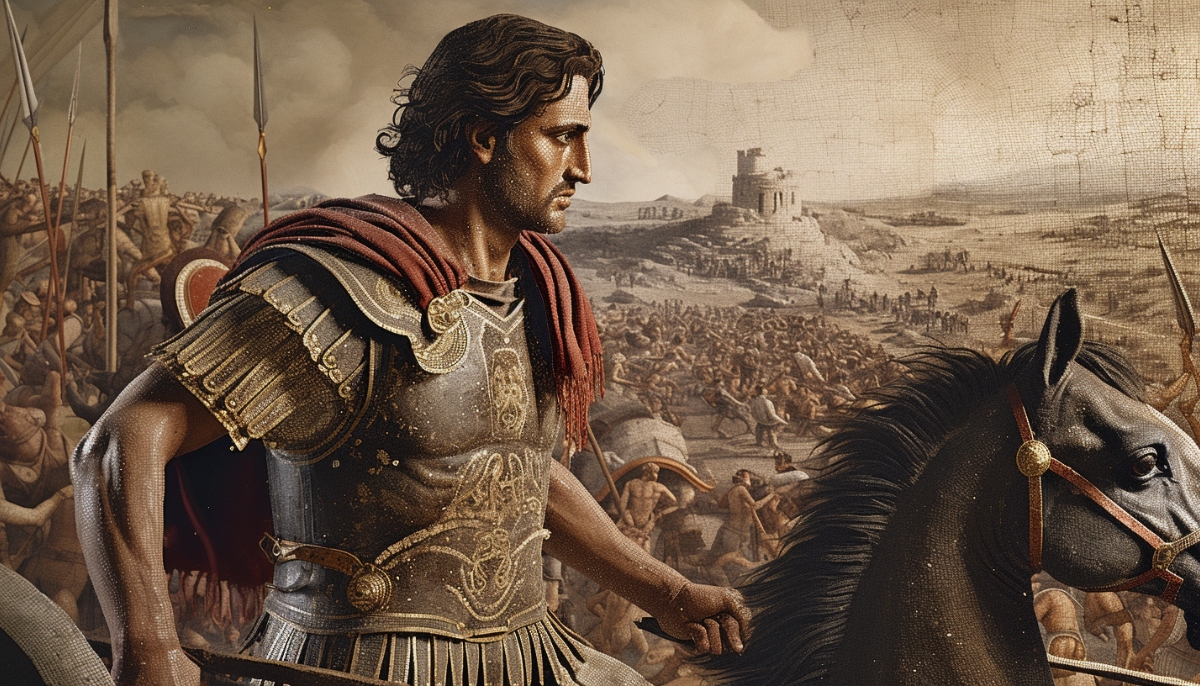
Other Ancient depictions of Alexander the Great
Many historic recreations of Alexander the Great have survived from ancient times, each with unique features and styles.
Two of the most well-known include the Alexander Rondanini Statue and the Alexander Sarcophagus.
The Alexander Rondanini is a Roman copy of a Greek original likely created in the 4th century BC. This bust shows Alexander with a flowing mane of hair, a strong jawline, and piercing eyes. The bust’s intricate details and lifelike features make it a masterpiece of ancient Greek art.

The Alexander Sarcophagus is a monumental sarcophagus that was likely created for a member of Alexander’s court. The sarcophagus features elaborate carvings that depict scenes from Alexander’s life, including his battles and triumphs.
Alexander is depicted in several poses and expressions as a heroic warrior and a thoughtful philosopher.
Alexander the Great was a leader who understood the importance of using imagery to bolster his power and influence. One of the ways he did this was by linking himself to the Greek gods, most notably Zeus, as well as the Egyptian god Ammon. Find out more by reading our article on Alexander's obsession with Zeus-Ammon.
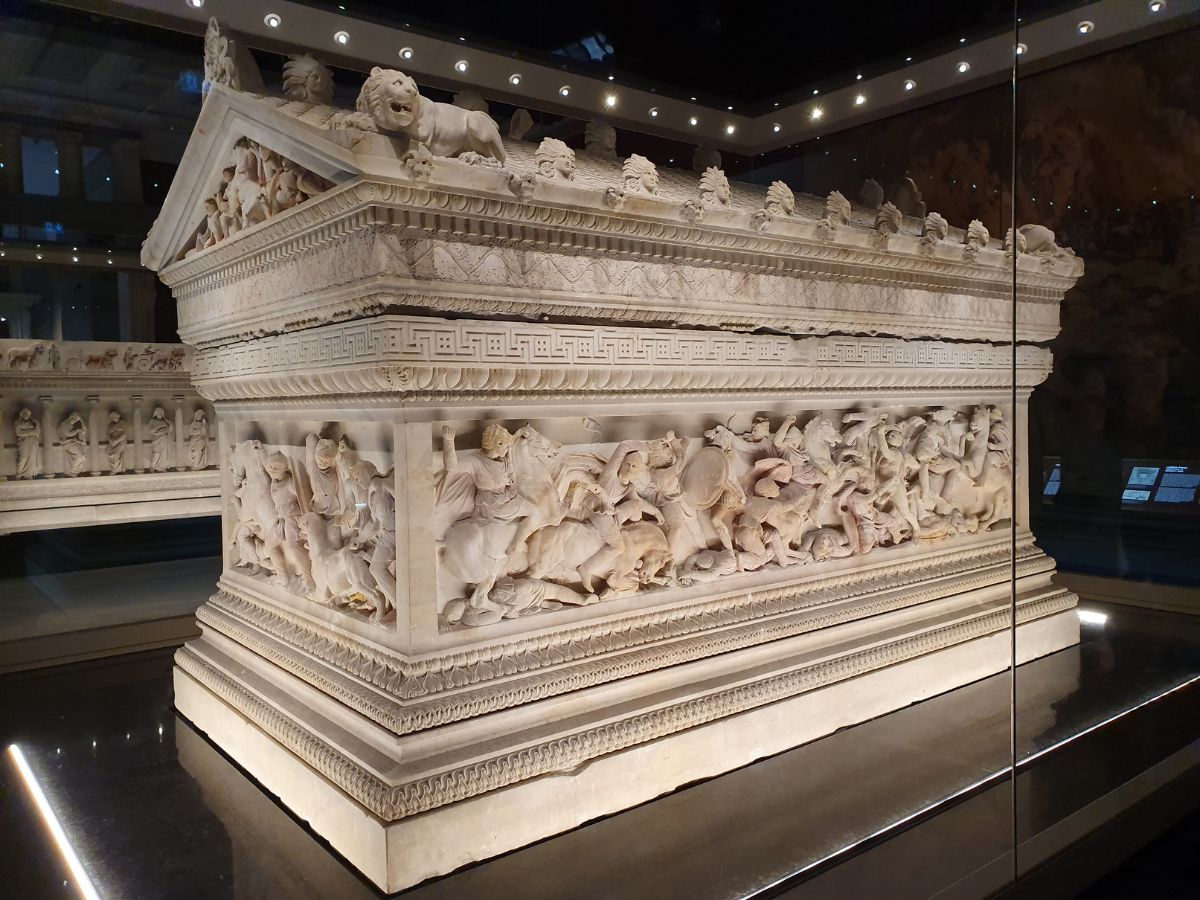
Did Alexander the Great have heterochromia?
Alexander the Great is said to have had a condition called heterochromia, which means he had different-colored eyes.
According to some accounts, one of his eyes was blue, and the other was brown. This condition is rare and occurs when melanin, which gives the eye its color, is uneven in the iris.
Some historians speculate that Alexander’s heterochromia may have added to his legendary charisma and magnetism, making him stand out and appear even more unique and extraordinary.
From ancient marble busts to the renowned Pompeii mosaic, we’ve used AI to generate new perspectives on this iconic leader’s appearance. Whether you’re a history enthusiast or simply curious, we hope these fresh images offer a richer understanding of the man behind the military legend. Check out our article “what did Helen of Troy look like?” for more recreations.






